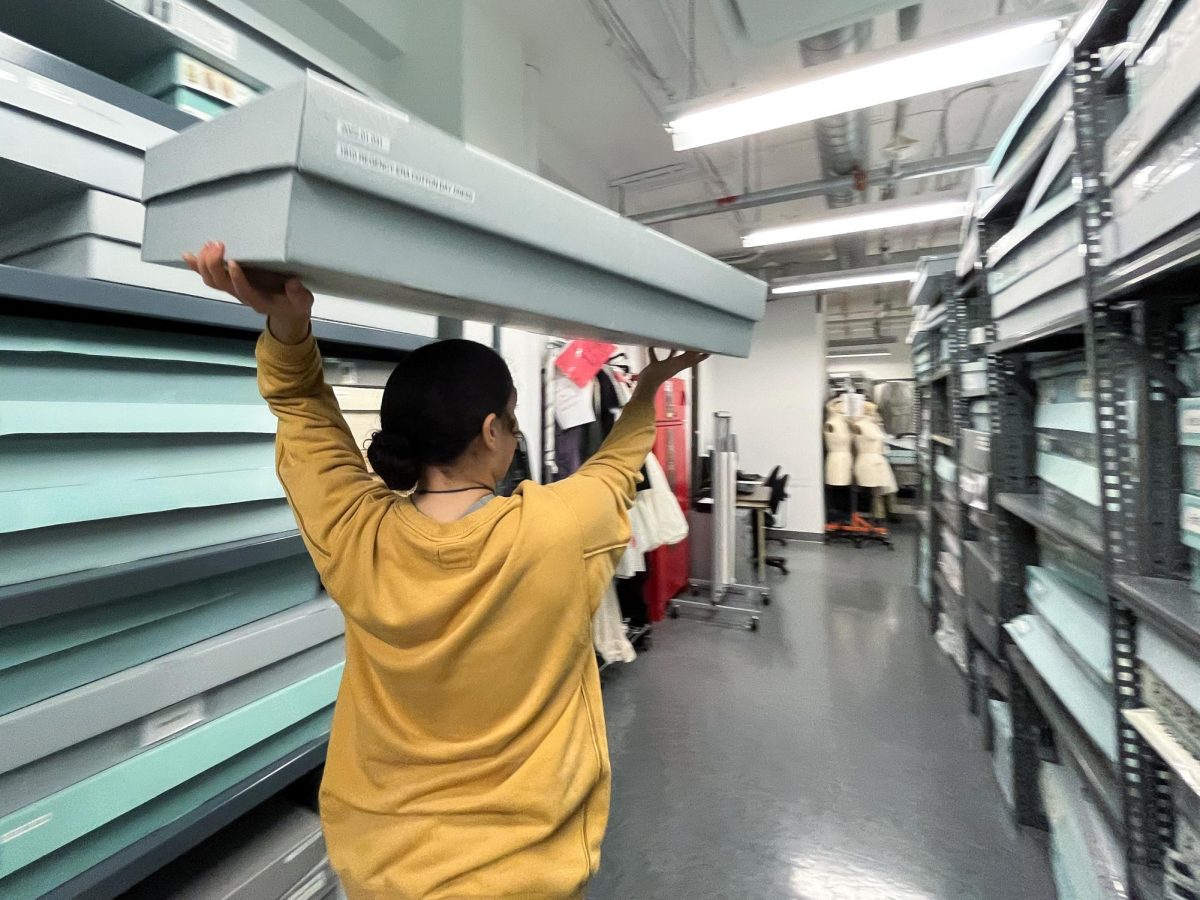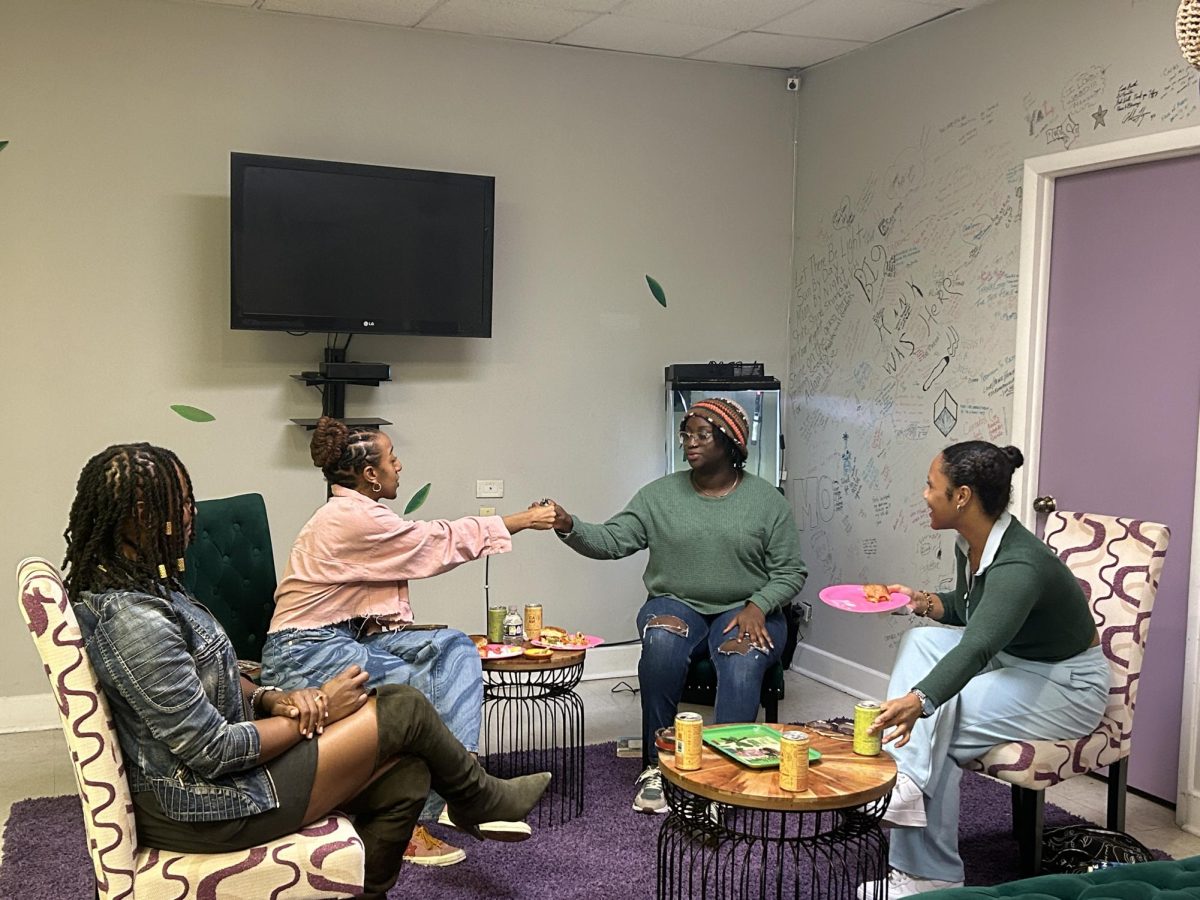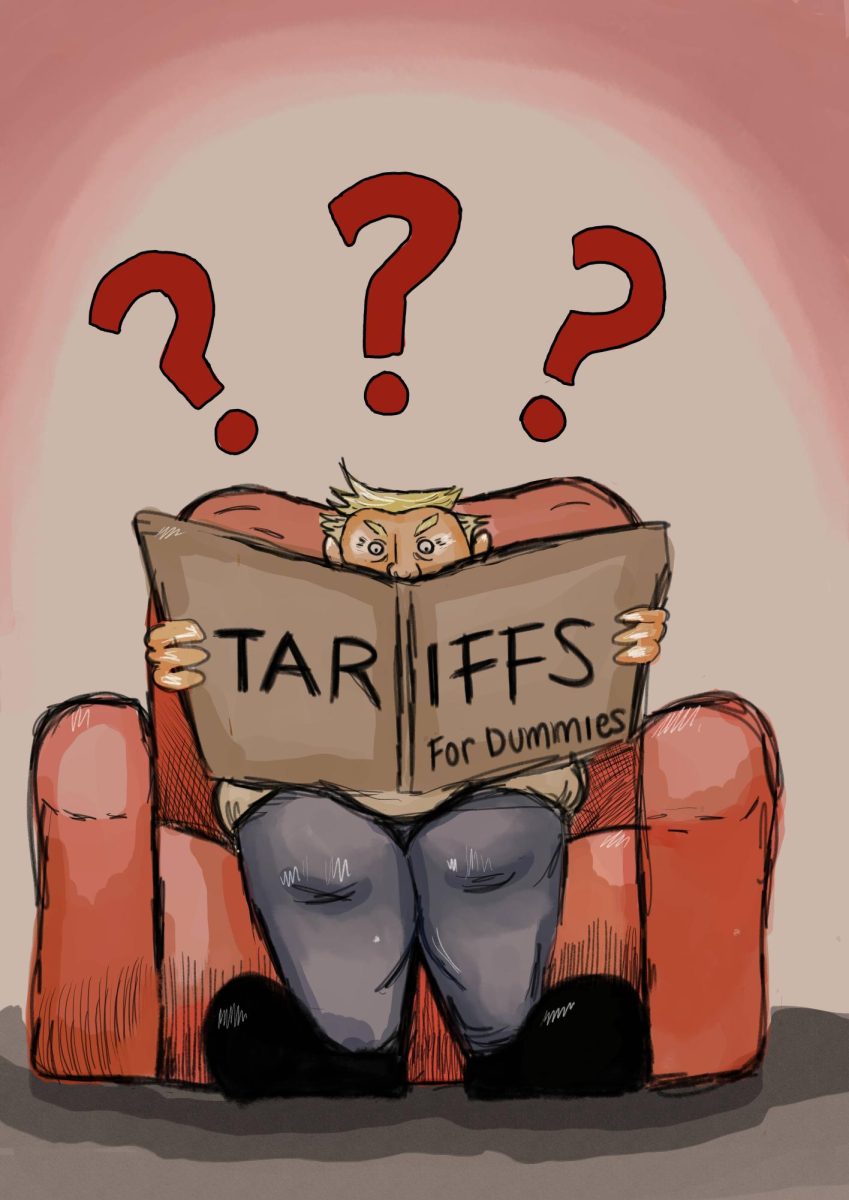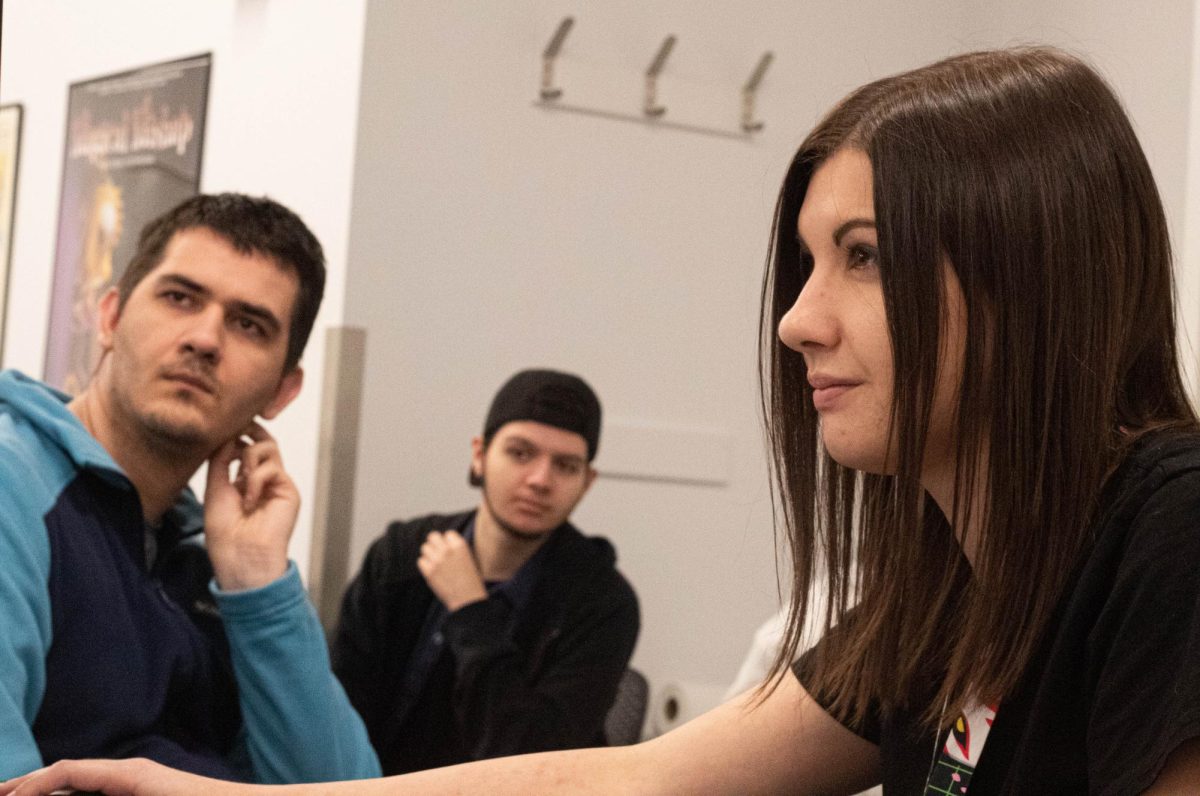Senior fashion studies major Sophia Klun has been a student intern at the Fashion Study Collection since the Spring semester of 2022. As an intern she is tasked with conducting inventory on the over 6,000 piece collection, giving tours to classes and individual students alike, and maintaining an ever-growing knowledge of the contents of the FSC. The FSC contains pieces from a range of decades, with its oldest being from the 1810s. From elephant leather purses to Yves Saint Laurent hats, the collection has a wide variety of pieces, each with their own stories to study. Along with the clothing, there is also a written collection, featuring sketches from famous designers like Valentino, old Playboy magazines and much more.
Copy edited by Trinity Balboa
TRANSCRIPT:
0:08
Okay, here’s the elephant purse.
0:16
This is an elephant skin leather purse, leather because it’s treated the same way as cow’s hide. Leather as far as the color and you know, the shine and everything that they would have done to process the leather before it became a bag. Pretty standard little black purse.
0:34
This is from the ‘40s.
0:37
So the ‘40s were super big on exotic animal skins, furs.
0:53
So the Study Collection is mostly focused on fashion students.
0:59
So not a lot of students besides those who are in our fashion program, have the opportunity to come and visit.
1:05
That does not mean that it’s exclusive to fashion students only.
1:08
You are… you do not have to be a fashion student to come by and visit.
1:12
We are working on getting other departments to come in for visits to show people that art can be transitioning across different forms and it can relate to your curriculum, your teaching and all of those things regardless of what medium you’re working with, there’s like fashion in everything.
1:32
So this is a piece from the Japanese contemporary designer Issey Miyake. The whole idea behind this collection was origami pieces.
1:43
So this one, and I will do the demonstration for you, but it looks like a flat little flower, right?
1:50
It’s very compact.
1:52
It’s all flattened, but it’s a shirt.
2:00
Wow.
2:01
Yeah.
2:02
So there’s an arm hole and there’s an arm hole and it looks when it’s draped on the body or like on a form, these like kind of pleats and folds down at the bottom.
2:17
It’s sort of like a tulip-y floral kind of appearance.
2:22
I think our paper collection is the most underused resource that we have for anyone.
2:29
I really wish that students or faculty would come and use this resource more.
2:34
Most of the time everybody asks for the pretty clothes, objects. That’s totally fine,
2:39
but I feel like there are a lot of applications for what we have in this paper room for all sorts of programs.
2:45
So marketing and advertising students, looking at vintage ads and flipping through magazines and like seeing how they shot campaigns for like Marlboro back in the ‘60s.
2:56
Kind of like a men’s magazine, like seeing if you can kind of make a cool throwback ad that reflects something like that.
3:05
But especially these history classes like that right now as we’re trying to crack into those history classes, I think it would be really great because Columbia is an art school.
3:12
A lot of us are very visual learners,
3:14
and here you get to be a tactile learner because it’s a study collection, you get to touch things, which is super awesome.
3:20
So I feel like that would be a great way for people to do hands-on learning.
3:23
So just advocating in general for more classes across the college to come use us as a resource.
3:32
This is one I can’t help but pull out a lot.
3:37
The big thing I always like to point out with a piece like this is that we all like to imagine flappers as moving around and like fringe dresses and beaded dresses.
3:49
But in reality, there is no way that a flapper would have been able to move around in a piece like this.
3:55
Not only would it be dangerous because the beads could all fall off and then she could slip on them,
4:00
it’s super heavy. It is super, super heavy.
4:03
These are glass.
4:05
There’s probably millions of them on here.
4:07
So she would not be able to do very much flapping in a piece like this.
4:11
So I always tell everyone.
4:13
Yes, it’s true to period.
4:15
Yes, the silhouette is very similar to a flapper dress, but this woman would probably be going out for dinner or to the opera or having a smoke and a drink at a dinner party and mostly seated.
4:30
Right?
4:31
So she’s not moving around very much.
4:36
And this one would have been worn with an under dress, like a slip dress, basically.
4:41
Obviously, there’s like this kind of sheer element to it.
4:44
And although they were starting to become a little bit scandalous in the ‘20s, they were not quite ready for full nudity yet.
4:52
I’m in my final semester at Columbia right now.
4:56
So, looking back on my time here and as I transition out it is like a very heartfelt and like a little bit sad thing for me.
5:04
I actually discovered my career path post college through working here at the Study Collection.
5:11
So, although I’m a fashion studies, product development concentration, I actually will not be pursuing a career in the fashion industry current day.
5:21
I’m going to go into museum studies for fashion history.
5:25
So this has been an extremely pivotal experience for me to move on post-college and like find out what I want to do, discover my passions.
5:35
So I’m very upset to be leaving.
5:38
And I’m very sad about it, but I know that it’s gonna be in great hands and we’re already growing so much.
5:43
We’ve gotten so many more visitors in the past few years, post-pandemic.
5:48
So I think that it’s really starting to flourish and become more well-known on our campus.
Copy edited by Trinity Balboa













